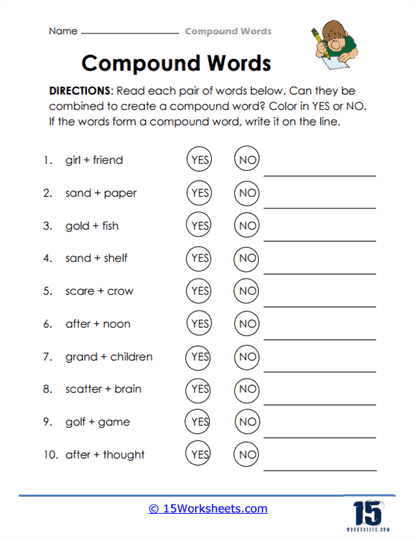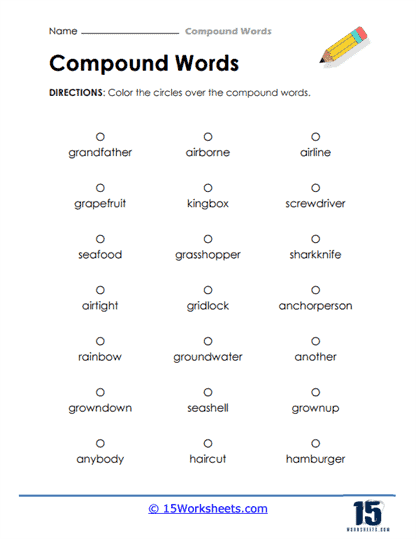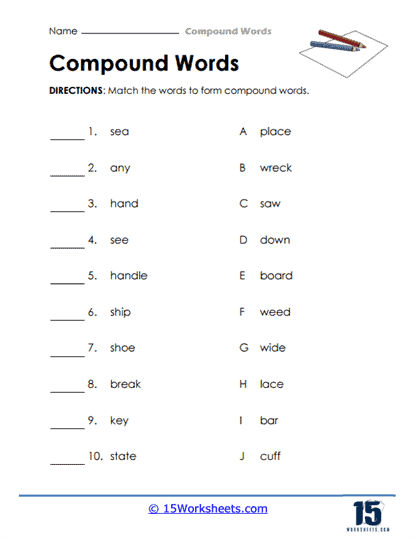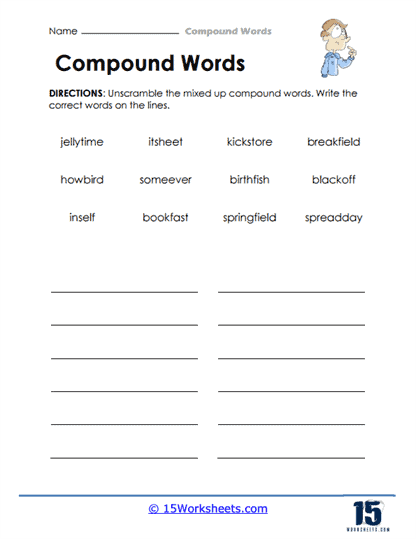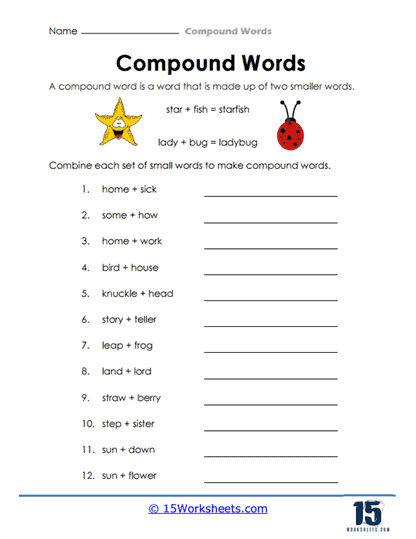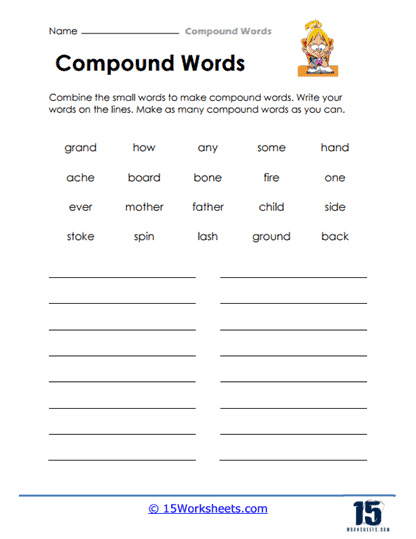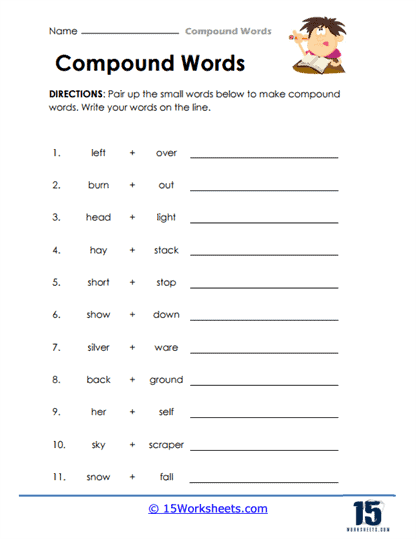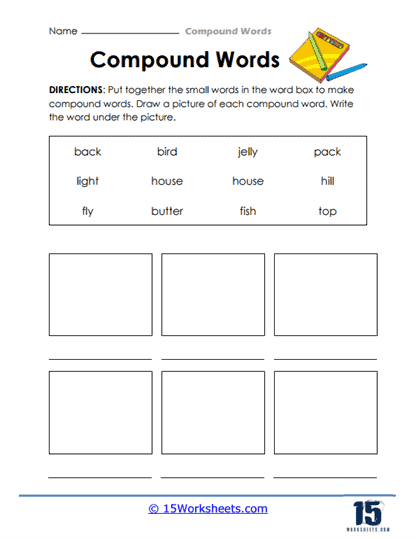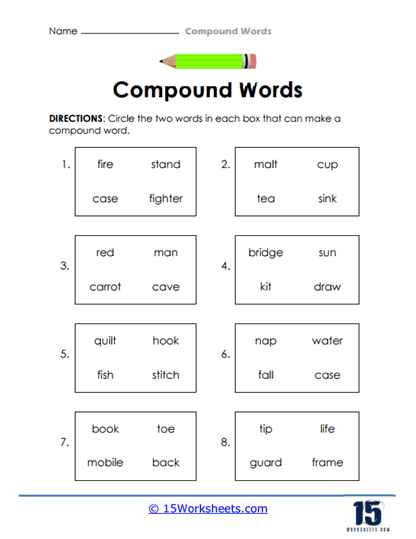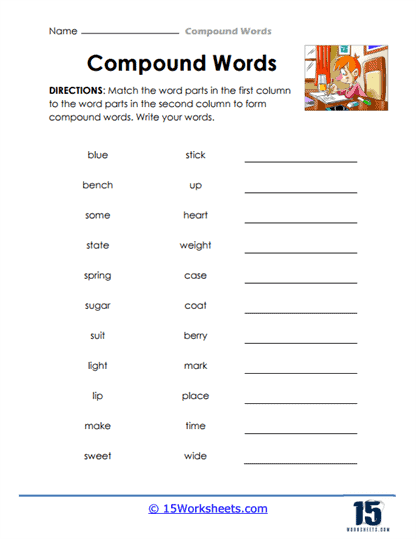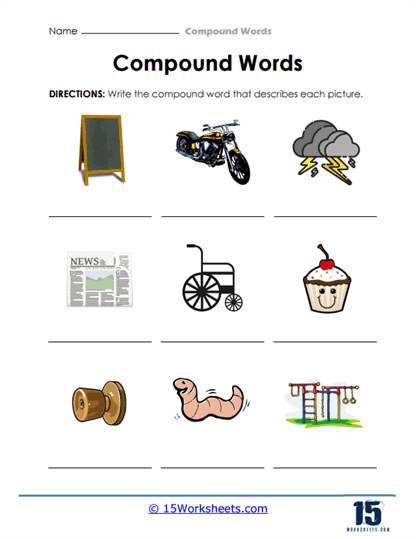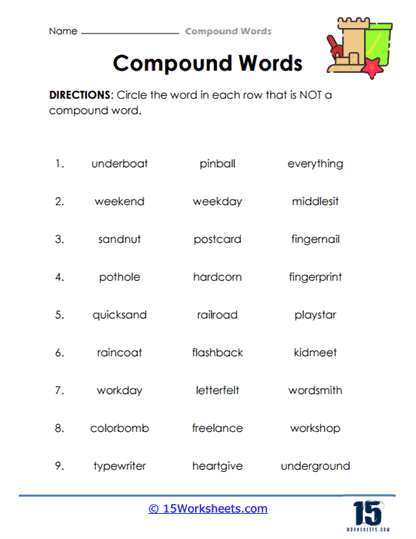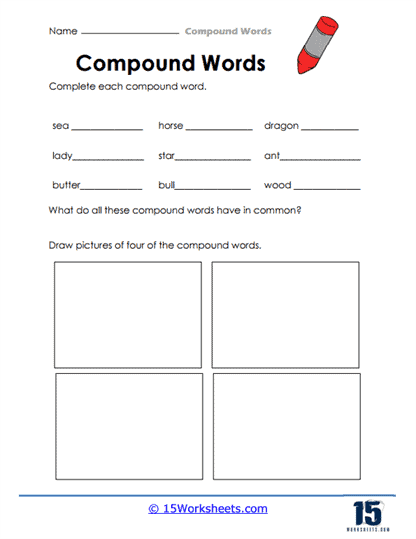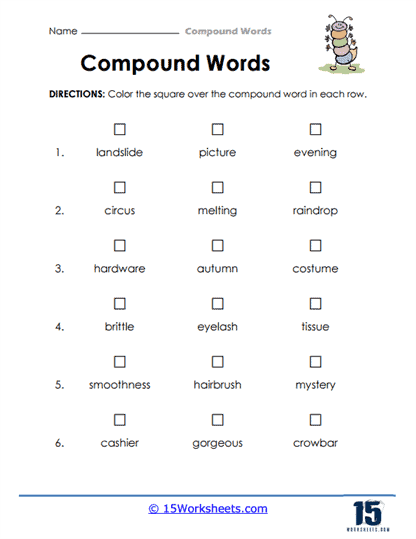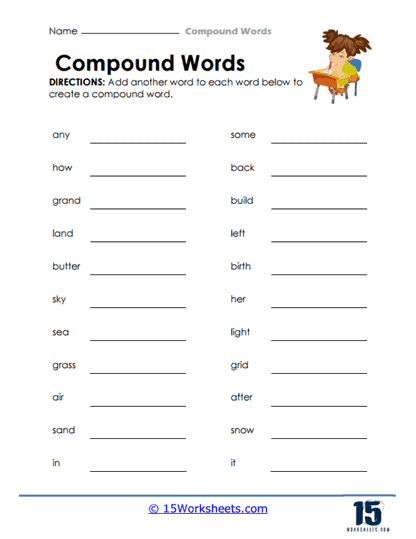Compound Words Worksheets
All About These 15 Worksheets
This series of 15 worksheets is designed to help students learn and practice compound words. Compound words are formed by combining two or more words to create a new word with a different meaning. These exercises aim to reinforce students’ understanding of the rules for forming compound words, as well as help them develop their vocabulary and critical thinking skills. Through these worksheets, students will:
- Identify whether pairs of words can form compound words when combined, which develops their critical thinking skills and reinforces their understanding of the rules for forming compound words;
- Identify whether words are compound words;
- Match words with other words to form compound words;
- Unscramble mixed up compound words, which develops their vocabulary and spelling skills;
- Combine pairs of words to form compound words;
- Draw pictures that represent different compound words, which develops their creativity and reinforces their understanding of compound words;
- And use pictures as visual cues to identify the compound words they represent, which hones their visual recognition skills.
Overall, these worksheets provide a range of exercises to help students learn and practice compound words. By completing these exercises, students can improve their vocabulary, critical thinking, creativity, and visual recognition skills, while also gaining a deeper understanding of how compound words are formed.
What Are Compound Words?
Compound words are formed by combining two or more separate words to create a new word with a distinct meaning. These words can be written in three different forms: closed compounds, hyphenated compounds, and open compounds.
Closed compounds
In closed compounds, the two words are combined without a space or hyphen, forming a single word. Examples include “firefly,” “notebook,” “sunrise,” and “playground.”
Hyphenated compounds
In hyphenated compounds, the words are joined by a hyphen. Examples include “mother-in-law,” “x-ray,” “part-time,” and “merry-go-round.”
Open compounds
In open compounds, the words are written separately with a space between them, but they still function as a single unit of meaning. Examples include “post office,” “ice cream,” “living room,” and “high school.”
Compound words can belong to various parts of speech, such as nouns, verbs, adjectives, or adverbs. Understanding compound words can help improve vocabulary, reading comprehension, and writing skills, as they provide clues to the meaning of the new word based on the individual words that form it.
Compound words are an integral part of the English language, and using them in your writing can enhance clarity, add variety, and improve the overall flow of your text. Here are some general guidelines for when it’s appropriate to use compound words in your writing:
Established compound words
Use compound words that are already established in the language and widely recognized by readers. These words are found in dictionaries and commonly used in both spoken and written English. Examples include “fireplace,” “skyscraper,” “watermelon,” and “butterfly.”
Clarity and precision
Use compound words when they provide a clearer, more precise, or concise way to express a concept compared to using separate words. For instance, using “greenhouse” instead of “a house for growing plants” or “lifeguard” instead of “a person who watches over swimmers.”
Consistency
When using compound words, ensure that you maintain consistency throughout your writing. Stick to one form of the compound word (closed, hyphenated, or open) as much as possible and follow the accepted conventions for that specific word.
Technical or specialized terms
In certain fields or industries, compound words may be used to describe specific concepts or jargon. Use these compound words when writing for an audience familiar with the terminology.
Creative writing and wordplay
In creative writing, you may use compound words to create new expressions or descriptions that evoke a particular image or feeling. This can be an effective way to engage readers and convey your intended message. However, avoid overusing this technique or creating confusing or overly complex compound words that may detract from your writing’s clarity.
When using compound words, ensure that they are appropriate for the context, follow established conventions, and contribute to the clarity and flow of your writing. Additionally, be mindful of your target audience’s familiarity with specific compound words and adjust your language accordingly.

